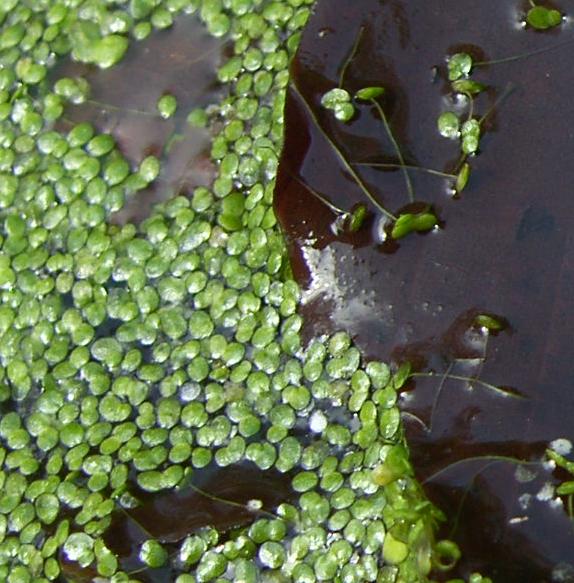Common DuckweedScientific Name: Lemna minor |
Common Duckweed, Lemna minor is the usual member of the genera which is found on garden ponds, each plant has a floating green thallus about 4 to 7mm in diameter with a single 'root' suspended below. Most of the nutrients and water are taken into the plant by the green thallus and not by the 'root', the main function of which is to act as an anchor and attaching to the feet of water birds for dispersal to other bodies of water. It is found in all parts of the world except the polar regions and the tropics.
Duckweed is thought to be the fastest growing plant around and can double its biomass in about 20 days in the right conditions. This gives it the potential to be an important food source and a possible energy source as well if harvested and converted to fuel.
There are some mentions of it in folk medicine with used for headaches and inflammation; also as a tonic.
When actively growing the main means of reproduction is by budding where a new plant grows out of the side of the thallus and breaks away when it reaches full size. During the winter months the number of plants greatly reduces or they may disappear. Usually they will have sunk to the bottom of the pond as growth will have slowed down so less oxygen is being produced which reduces the buoyancy and the relatively heavy starch stored in the plant makes it sink. In spring the increased amount of light available and the reduction in the amount of starch which has been used up during the dormant period, restore the buoyancy and the plants float beck to the surface.
Controlling the duckweed is difficult, but some measures can be taken to affect the conditions it favours, the most important of which is the nutrient level:
- avoid run-off from the surrounding areas into the pond
- stop leaf litter from entering by placing a net over the pond during leaf fall. Also when pond plants are dying back, remove the fading leaves to prevent them from rotting.
- use the correct amount of food if feeding fish
- tap water is full of nutrients so if possible use rain-water to top up the pond
A biological control for larger ponds is the Grass Carp Ctenopharyngodon idella which is a herbivore that feeds on plants and algae (ordinary carp Cyprinus carpio will eat other pondlife). They must not be used if the pond is fed by a stream or if flooding could allow escape as they are not native and it is illegal to introduce them to the wild.
There are some weedkillers which are listed for use, but only in isolated ponds and where you don't mind losing some other plants, eg. Glyphosate and Diquat, following the instructions on the label.Follow these links for further details on Weeds, Weed Removal and Weed Prevention.
